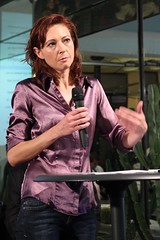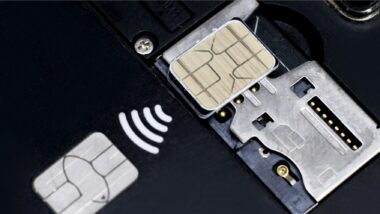This is my second post on our recent French conference on how the mobile has impacted society. It was held at the IT crowd hang-out, La Cantine, in Paris last week. Last week I blogged about the rise of mobile social media and today it’s the turn of mobile payment.
These days we would never leave our home without our mobile and keys but we may leave our wallet. The long-awaited arrival of mobile NFC in cities like Nice and London means that soon we’ll only need our phone and not even our house keys when we pop down to the store. However, in a world where most people have a basic phone and SMS is still the “killer” app (a very 2001 phrase) many countries have deployed banking and payment systems on the standard GSM network. In countries like Kenya, Colombia, Thailand and more this is helping to bridge the digital divide and increase living standards.

Our first guest speaker, Laurence Allard, a sociologist from Lille University 3 presented a wide range of examples showing the deployment of mobile payment services in developing countries such as Kenya where people in rural areas didn’t have access to communication or banking services just a few years ago. Nowadays in the East African state there are 18 million mobile users (from a total population of c.40m), 58% of whom can now pay and be paid using the M PESA service. Not only did this give people access to financial services for the first time but also helped reduce risks from theft as the money is not held physically. The latter was the main driver for a payment service in Afghanistan whereby the mobile was used to pay police salaries.
Back in France and other developed countries the mobile has changed the way we give to charity with Laurence giving many examples of people donating money by SMS in times of crisis like the earthquake in Haiti.
Next up was Thierry Koeberle (Gemalto) with an overview of mobile NFC. While some participants asked whether this time really is the right time for NFC after some false starts, Thierry felt that many of the blocking points were being removed. Handsets are being launched (Android is a big support) while infrastructure like POS terminals and readers are being put in place by retailers and transport operators. In particular the infrastructure and operators in London look ready to give NFC a massive boost in time for the Olympics (partly down to the success of the humble Oyster card).
Coverage isn’t global yet but there are pockets of excellence like Nice in France (with the first commercial roll-outs) and more than 40 other pilots currently happening around the world. A question came from the audience whether now was the right time for start-ups and developers to kick-start investments and the answer from Xavier Larduinat, our MC for the evening, was a resounding yes.
Thanks to Pierre Metivier for the photos, next time mustn’t forget the camera 😉


